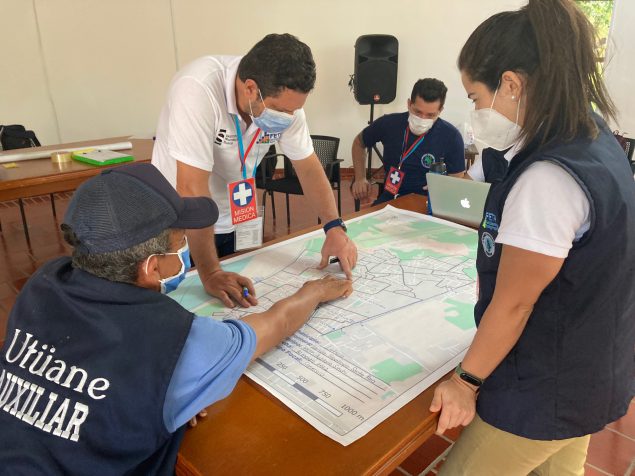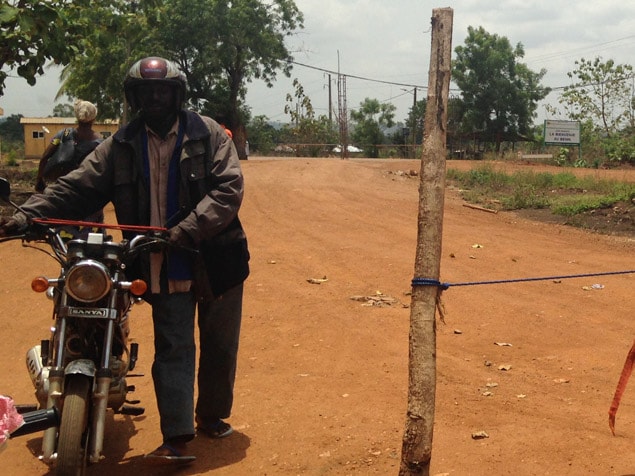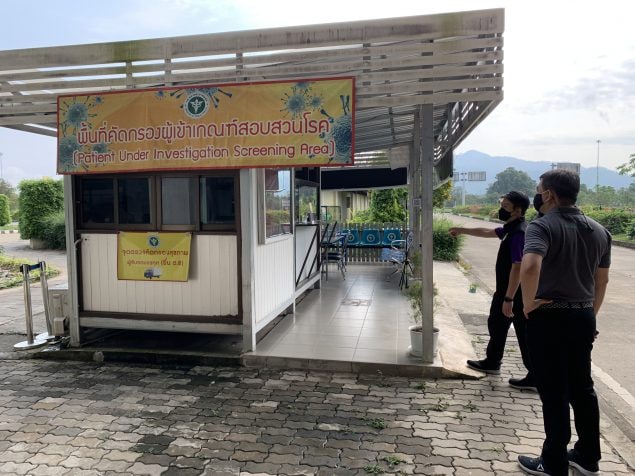Migration and Border Health

Understanding the migration patterns of immigrants, migrants, refugees, and travelers is essential to preventing the spread of public health threats across an international border. Border health is the area of public health that focuses on mobile populations and the communities they visit before, during, and after travel. As such, border health supports activities along their entire journey, whether within their country or internationally to identify and address any risks associated with the spread of communicable diseases.

A mapping activity in Leticia, Amazonas, Colombia helps public health officials identify where people move around the border between Colombia, Brazil, and Peru. ©CDC/Hannah Katz, ORISE
Strong border health systems require up-to-date plans and procedures, well-trained and equipped staff, and the legal authorities (laws, regulations, and policies) to implement travel measures affecting the movement of people or goods for public health purposes. Therefore, CDC helps countries develop border health strategies that focus on strengthening governmental and non-governmental public health systems and workforce capacities through:
- Examination of public health preparedness and response capacities at official points of entry,
- Analysis of population movement patterns and the strength of connectivity between geographically separated communities, and
- Collaboration and routine public health information sharing between neighboring countries and across a region.
CDC experts work in the United States and abroad to apply the best science to protect people from the international spread of infectious diseases. Working with government and non-government partners globally, CDC develops public health capacity in border areas and at points of entry (POEs), including international airports, ports, and ground crossings. The technical assistance also helps build capacities in national or regional public health systems to address mobile populations better.
Partnerships with governments, agencies, and organizations are vital in preventing the spread of communicable disease threats across international borders. CDC minimizes these threats by:
- Developing and disseminating tools to improve border health systems and understand population mobility,
- Training stakeholders, and
- Studying the spread of disease among internationally mobile populations.
Country partners then lead the development and implementation of context-specific plans, procedures, training materials, tools, analyses, and mapping. Throughout the process, CDC encourages the integration of strategies reflecting evidence-based best practices and science.
Guidance and Resources on Preventing and Controlling Infections in Globally Mobile Populations
- Considerations for Health Screening at Points of Entry
- Tool to Prioritize Points of Entry and Points of Control
- COVID-19 Testing Point of Entry Considerations
- Rapid Assessment of Point of Entry Capacity (RAPC) for COVID-19
- Border Health Strategies for Mitigating the International Spread of COVID-19 [PDF - 1.33 MB, 32 pages]


